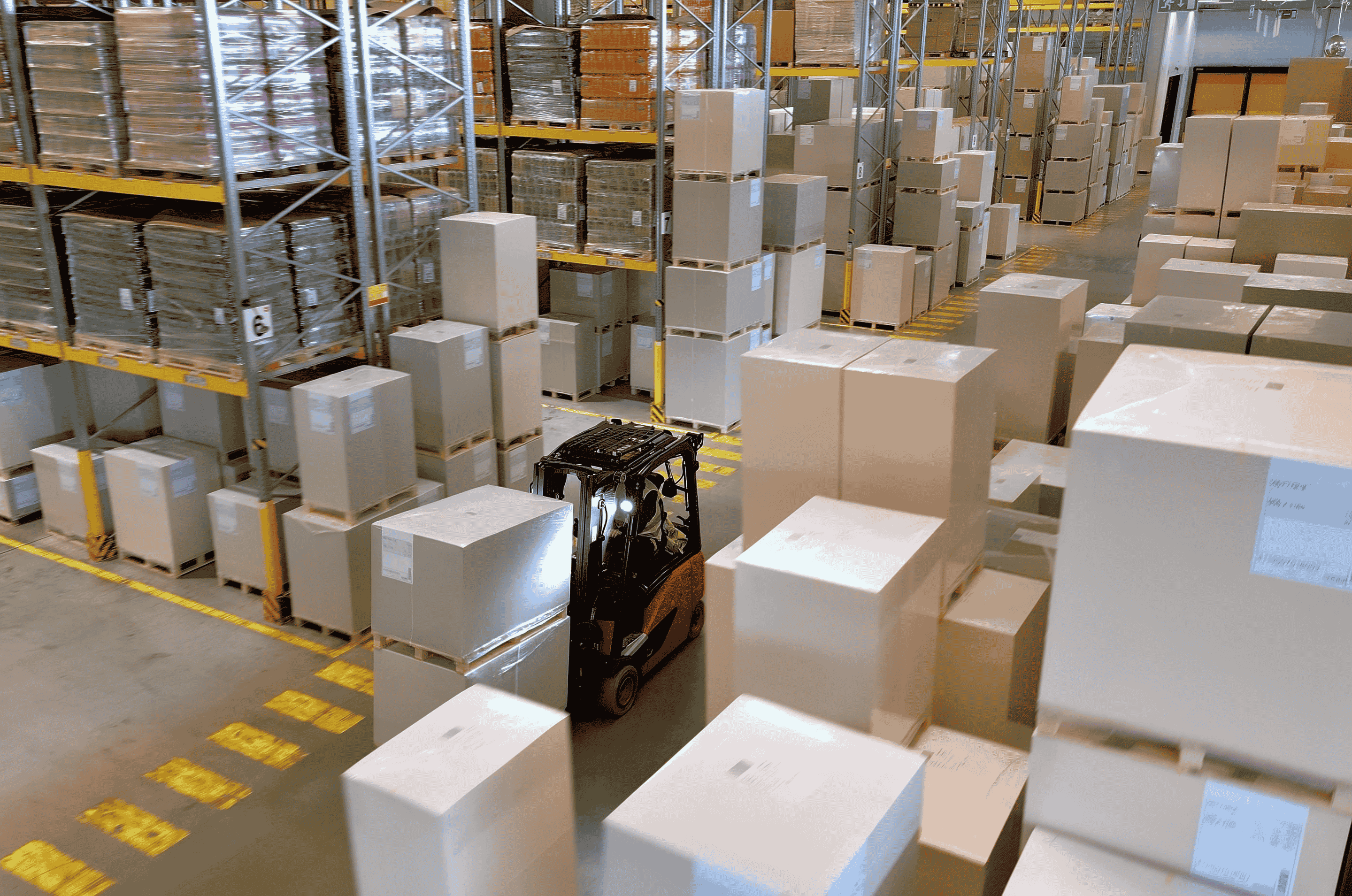As ecommerce operations scale, inefficiencies in the shipping process tend to multiply. Manual decision points that were manageable at low volume become liabilities at scale, slowing fulfillment, introducing errors, and increasing costs.
Selecting the right fulfillment strategy is crucial when scaling shipping operations, as it helps businesses optimize processes, control costs, and support growth.
While the appeal of automation is clear, many teams struggle with where to begin. With hundreds of potential touchpoints across systems and processes, automating in the wrong order can create more complexity rather than reducing it. Without a clear automation plan, fulfillment costs can quickly escalate, impacting overall profitability.
This article outlines a clear, strategic approach to prioritizing shipping process automation—starting with the highest-impact workflows that improve speed, consistency, and visibility across fulfillment, while optimizing order fulfillment processes for efficiency and customer satisfaction.
Automation as Operational Infrastructure
Shipping automation is often positioned as a tool for speed. But at scale, its true value is in creating operational infrastructure: systems that execute repeatable logic consistently, reduce human error, and allow teams to shift from reactive problem-solving to strategic oversight. Automation technology underpins these scalable shipping systems, enabling businesses to streamline processes and support growth.
Rather than automating for automation’s sake, leading ecommerce brands take a layered approach—starting with high-frequency, error-prone workflows and progressively building toward more advanced decision automation.
Incorporating warehouse automation as part of this approach not only increases efficiency but also helps reduce operational costs by minimizing labor expenses and errors.
Step 1: Identify High-Friction, High-Frequency Workflows
The best candidates for early automation are not the most technically advanced. They’re the tasks that occur often, break easily, and cost your team the most time. These include: manual data entry, which is a frequent source of errors and delays; repetitive approvals; and status updates.
When considering which tasks to automate, focus on high-frequency workflows like order processing, which can be streamlined to reduce processing times and improve overall efficiency.
Address Validation at Checkout
Why it matters: Invalid or incomplete shipping addresses lead to failed deliveries, customer complaints, and rework in both fulfillment and support. Automating address validation at the point of entry reduces these downstream issues by a significant margin. Accurate address validation also helps improve shipping efficiency by reducing delivery errors and streamlining the shipping process.
Implementation tip: Integrate real-time address correction and verification directly into your checkout flow to enhance overall shipping efficiency. Many providers support international address logic, which is critical for cross-border operations.
Multi-Warehouse Order Splitting with Warehouse Management System
Why it matters: Brands fulfilling from multiple nodes often rely on manual decisions to allocate order lines. This not only slows processing but also leads to unnecessary shipping costs or missed SLAs. Effective inventory management and real-time inventory tracking help optimize stock levels and improve order allocation, reducing errors and preventing stockouts.
Implementation tip: Use logic-based rules to automatically route SKUs to the optimal fulfillment center based on inventory levels, proximity to the destination, and delivery commitments. Incorporate real-time inventory tracking to ensure accurate stock levels for efficient order processing.
Default Carrier and Service Selection
Why it matters: Selecting carriers manually introduces inconsistency and prevents brands from scaling fulfillment efficiently. Carrier decisions should be driven by data—delivery speed, cost, and zone coverage—not individual discretion. Working with multiple shipping companies and optimizing carrier selection can help save money on shipping costs by allowing you to negotiate better rates and choose the most cost-effective options for each order.
Implementation tip: Define business rules that assign carriers based on weight, destination, delivery promise, and customer selection (if applicable). This removes guesswork from a high-volume decision point.
Step 2: Reduce Latency Between Systems
After stabilizing core workflows, the next priority is cross-system automation—ensuring information moves automatically between platforms without manual intervention. This increases speed and reduces internal misalignment.
Cross-system automation can also increase efficiency by enabling real time tracking and seamless data flow, which improves transparency and optimizes order fulfillment processes.
Tracking Synchronization
Why it matters: Manually entering tracking numbers into ecommerce platforms, customer service tools, or ERP systems slows operations and creates visibility gaps. This directly impacts the customer experience and increases support load. Real-time tracking synchronization helps improve customer satisfaction by providing timely updates and transparency, while also enhancing order accuracy through automated tracking and reduced manual errors.
Implementation tip: Configure your shipping platform or middleware to push tracking events (label creation, pickup, delivery) across all relevant systems in real time.
Batch Label Generation Based on Carrier Cutoffs
Why it matters: Many operations batch print based on internal schedules, rather than external carrier deadlines. This often results in missed pickups or delayed shipments, particularly during peak volume periods.
Implementation tip: Use automation to group and prioritize shipments based on real-time carrier cutoff windows, SLA requirements, or promised delivery dates. Automated labeling systems and automatic shipping systems can further streamline batch label generation and reduce manual work by efficiently printing and applying shipping labels, as well as automating label creation and shipping method selection.
Inventory Management-Aware Label Logic
Why it matters: Printing labels for items that aren’t in stock introduces friction in the packing process and creates customer service issues. Automating a simple inventory check before label generation improves accuracy.
Implementation tip: Connect your shipping software or order management system to real-time inventory data to block or flag orders with insufficient stock before initiating fulfillment. Using inventory management software and a streamlined inventory management process ensures real time inventory visibility, supporting accurate label generation and reducing fulfillment errors.
Step 3: Optimize for Cost, Speed, and Scalability
Once core workflows are stable and well-integrated, automation can be applied to more complex processes that drive cost savings and scalability. Using key performance indicators to measure the success of automation in optimizing the delivery process helps businesses assess efficiency, identify areas for improvement, and ensure that logistics operations meet customer expectations.
Dynamic Rate Shopping to Reduce Shipping Costs
Why it matters: Relying on static carrier assignments can lead to overpaying for shipments or missing out on better-performing services. Real-time rate optimization allows brands to balance cost with service-level commitments.
Implementation tip: Enable rate shopping logic that compares carriers across negotiated and retail rates, considering factors like dimensional weight, zones, and cutoff times. Automating shipping labels and optimizing rate shopping can help reduce labor costs by streamlining order fulfillment and minimizing manual work.
Returns Routing and Label Automation
Why it matters: Returns are operationally complex and often overlooked in automation strategies. Automating return workflows improves efficiency, visibility, and customer satisfaction.
Implementation tip: Set logic to generate return labels automatically and route them to the correct facility based on geography, product type, or restock eligibility. Integrate return data with your inventory and refund systems for closed-loop visibility.
Incorporating retrieval systems and automated packaging systems can further streamline the returns process, improving efficiency and accuracy in handling returned items.
Exception Alerts and SLA Monitoring for Customer Satisfaction
Why it matters: Even the best workflows encounter edge cases—packages delayed in transit, labels that fail to scan, or orders stuck in a fulfillment backlog. Automating alerts for these exceptions helps teams address issues proactively.
Implementation tip: Configure exception rules and push notifications via Slack, email, or ticketing systems. For example, flag orders unshipped after 48 hours, or track shipments that haven’t updated status in 5+ days. Use historical data to identify common exception patterns, and regularly analyze order data to refine your exception rules and improve SLA monitoring.
International Shipping Considerations
Expanding into international shipping introduces a new layer of complexity to your fulfillment process. Navigating customs regulations, varying carrier networks, and cross-border logistics can quickly impact both operational efficiency and customer satisfaction if not managed proactively.
To maintain a seamless shipping experience and meet global customer expectations, it’s essential to address the unique challenges of international shipping with targeted automation strategies.
Automating Customs Documentation
Customs documentation is a critical component of international shipping, and manual handling can lead to costly errors, shipment delays, and increased shipping costs. By integrating warehouse management systems and shipping software, businesses can automate the generation and submission of customs forms, ensuring that all required information is accurate and compliant with international regulations.
This automation not only streamlines the shipping process but also reduces the risk of non-compliance, helping to avoid unexpected fees and delivery interruptions.
Leveraging automation in customs documentation allows your warehouse management team to focus on higher-value tasks, while ensuring that every international shipment moves smoothly through customs checkpoints.
Cross-Border Carrier Selection
Choosing the right carrier for international shipments is essential for balancing shipping costs, delivery speed, and reliability. With a wide range of carriers offering different rates, transit times, and service levels, manual selection can be both time-consuming and inconsistent.
Automated shipping systems can compare real-time rates and performance metrics across multiple carriers, enabling you to select the optimal shipping partner for each destination.
This data-driven approach to carrier selection not only reduces shipping costs but also improves delivery speed and overall customer satisfaction. By automating this decision point, you can ensure that your shipping processes are both efficient and responsive to the demands of international customers.
International Tracking and Compliance
Maintaining visibility and compliance throughout the international shipping journey is vital for an efficient order fulfillment process. Automated tracking systems provide real-time updates on shipment status, empowering your team to proactively manage exceptions and communicate with customers.
Additionally, automation technologies can help ensure compliance with local regulations, such as tax requirements and customs procedures, reducing the risk of delays or penalties.
Integrating warehouse management systems and shipping software for international tracking and compliance not only improves inventory accuracy and operational efficiency but also enhances overall supply chain efficiency.
By regularly analyzing order data and refining your fulfillment strategies, you can reduce errors, optimize your shipping operations, and gain a competitive edge in the global marketplace.
By prioritizing automation in these key areas of international shipping, businesses can build a robust, efficient order fulfillment process that meets customer expectations, controls shipping costs, and supports long-term growth in new markets.
Avoid Premature Automation
Not every workflow should be automated—especially if the underlying process is unclear or unstable. Attempting to automate a poorly defined process can introduce more risk than reward.
Before implementing automation, ask:
- Is the task repeatable and consistent?
- Does automation reduce time, cost, or error rate?
- Is the data feeding this workflow accurate and up to date?
- Can the logic adapt to exceptions or edge cases?
If the answer to any of these is no, optimize the process manually first—then revisit automation. Evaluate whether you are using the right picking method for your distribution center, as choosing the appropriate method can significantly improve speed and accuracy.
Additionally, consider outsourced fulfillment as an alternative to automating unclear or inefficient in-house processes.
Final Considerations: Automation as a Scaling Strategy
Shipping automation isn’t a one-time implementation—it’s a scaling strategy. When approached methodically, it allows brands to:
- Reduce headcount reliance for repetitive tasks
- Improve SLA consistency and carrier compliance
- Reduce fulfillment errors and returns, ensuring timely order fulfillment and accurate processing of customer orders
- Increase speed without increasing complexity, directly impacting customer satisfaction and loyalty
- Free up operational bandwidth for higher-level planning, including optimizing order fulfillment and supporting the fulfillment team
For brands shipping hundreds or thousands of orders per day, the question is not if automation should be prioritized, but where to start—and how to build an infrastructure that evolves as the business grows. Effective automation leads to improved customer satisfaction and customer loyalty by ensuring efficient, timely, and accurate order fulfillment.
As ecommerce continues to drive higher customer expectations, selecting the right order fulfillment strategy and optimizing order fulfillment processes are essential for staying competitive.
Additionally, robust supply chain management and proactive planning for supply chain disruptions are critical to scaling operations smoothly and maintaining high service levels.
Related Topics
Learn how VESYL can save you money on shipping
Not sure which plan suits you best? Have questions about our software? Contact our sales team for expert guidance.

.png)


.png)


.png)